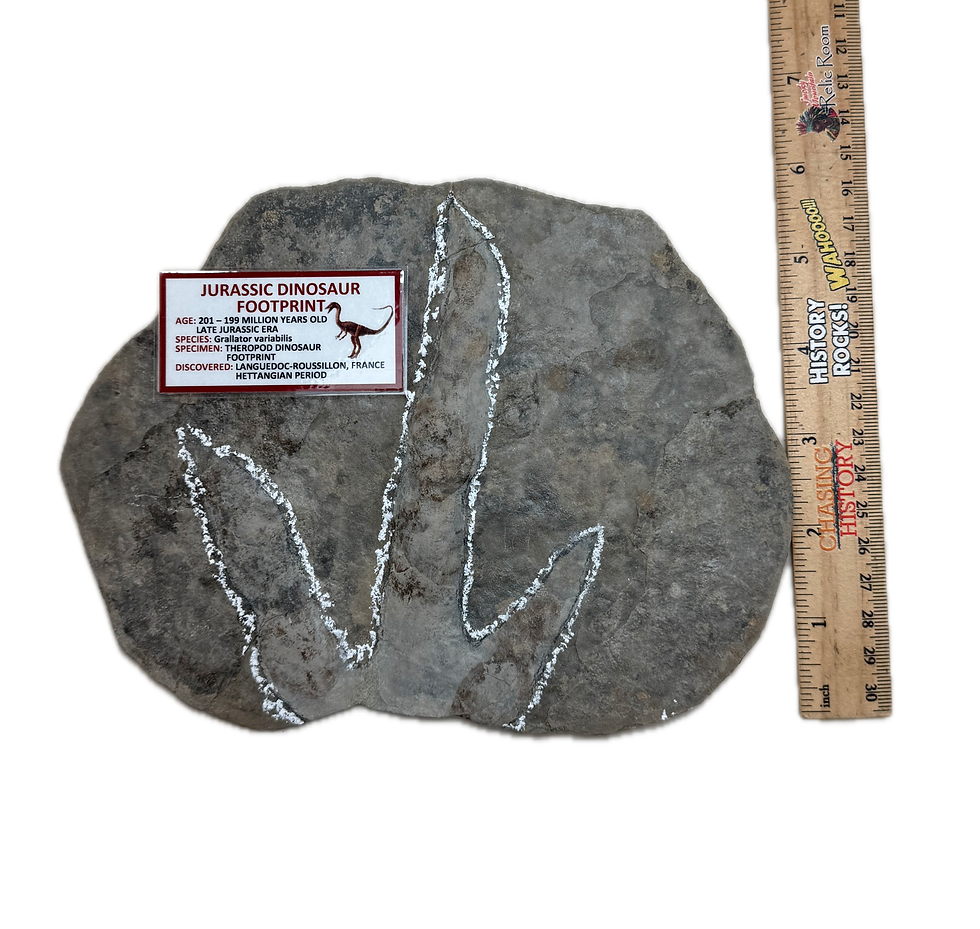The Allosaurus rex, one of the most iconic carnivorous dinosaurs of the Jurassic Era, continues to capture the imagination of paleontologists and dinosaur enthusiasts alike. Among the remarkable discoveries associated with this fearsome predator is a set of tail vertebrae that date back approximately 155 to 148 million years. These fossilized remains provide a rare glimpse into the life of Allosaurus rex, shedding light on its size, anatomy, and its role in the ancient ecosystem.
Found in the Morrison Formation of Utah, this tail vertebrae offers invaluable insights into the physical characteristics of Allosaurus rex. These vertebrae, measuring roughly 11 centimeters across and 7 centimeters thick at their largest points, reveal the dinosaur's impressive size and robust build. The thick, well-preserved bones suggest a powerful tail, which was likely a critical component of its predatory arsenal. Allosaurus rex was known for its agility and formidable hunting skills, and these vertebrae underscore the importance of its tail in achieving balance and agility during pursuit of prey.2
The discovery of these ancient tail vertebrae also provides a valuable window into the geological history of the region. The Morrison Formation, known for its rich dinosaur fossil deposits, has yielded numerous treasures that continue to expand our understanding of prehistoric life. The age of these fossils, dating back to the Late Jurassic period, allows scientists to piece together the complex puzzle of Earth's ancient ecosystems, including the interactions between apex predators like Allosaurus rex and their prey. As researchers continue to study and analyze these fossils, they contribute to our growing knowledge of the Earth's distant past, helping us better appreciate the magnificent creatures that once roamed our planet.
- More Info
The Allosaurus, a fearsome and iconic dinosaur of the Jurassic Era, roamed the Earth approximately 155 to 148 million years ago. This magnificent predator was a member of the theropod group, which also includes the famous Tyrannosaurus rex, and it held a dominant position in the prehistoric food chain. Allosaurus was a true apex predator, boasting an array of impressive characteristics that made it a formidable force during its time.
One of the most striking features of Allosaurus was its size. These dinosaurs were typically around 30 feet (9 meters) in length, although some individuals could grow even larger. Their powerful build, equipped with strong hind limbs and a large skull filled with sharp teeth, gave them a fearsome appearance. Allosaurus had serrated teeth that were perfect for tearing through flesh, and its jaw was capable of opening extremely wide, allowing it to take down large prey with ease.
The Allosaurus was a carnivore that likely hunted a variety of herbivorous dinosaurs of the time, including sauropods like Apatosaurus and Diplodocus. Its hunting strategy likely involved both solitary pursuits and group efforts, as evidenced by some fossil evidence that suggests cooperative hunting behavior. This adaptability made Allosaurus a successful and dominant predator in the Jurassic ecosystems it inhabited.
The legacy of Allosaurus continues to captivate the imagination of paleontologists and dinosaur enthusiasts today. Fossil discoveries and ongoing research shed light on its biology, behavior, and role in Earth's prehistoric past, helping us better understand the incredible diversity of life that thrived millions of years ago during the Jurassic Era.
top of page
SKU: FOSB4
$550.00Price
Related Products
bottom of page





















